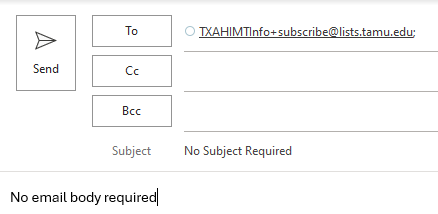The Texas Incident Management Teams involve the organization and management of a community’s most serious, complex, and costly incidents. These incidents must be managed in a safe and economical manner,
taking into consideration incident objectives, values at risk, social, environmental, and political issues. The Texas All-Hazards Incident Management Team Program is considered an “all-hazard” discipline,
as they may be needed for a variety of emergencies or disasters including hurricanes, storms, tornadoes, floods, terrorist activities, hazardous materials or wildfire incidents. The overall intent of these
IMTs is to support the requesting Authority Having Jurisdiction (AHJ) and Agency Administrators.
AHIMT Info Listserv / Distribution List
If you wish to receive information and updates about AHIMT training and qualifications standards, please send an email to
TXAHIMTInfo+subscribe@lists.tamu.edu. A subject line or email body is not necessary, just a blank email to that address (example email below).

Once you send that email, you will receive a "Join Request" email.
You must reply to that "Join Request" email in order to complete your subscription. Please do not change the subject as the ID field is important. (clicking the blue button in this email only works if you are logged in to a Google account). At that time, you will receive a final email, confirming that you have joined the TXAHIMTInfo group.